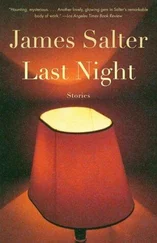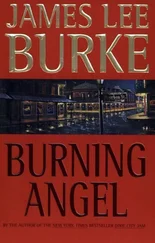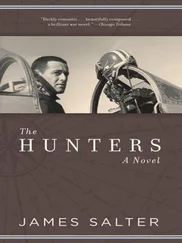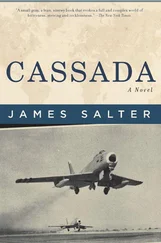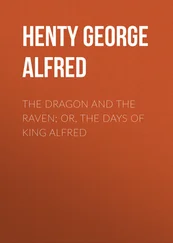I was fearful as we climbed in the cold air, the planes bobbing slightly. Perhaps it was the day I saw my first MIG, silver, passing above us, complete in every strange detail, silent as a shark. There were many in the air that day. They were coming from the north in flight after flight, above us. I remember how helpless and alone I felt. My throat was burning as I breathed.
His eyes were bad. They used to say that if anyone had the chances Amell had, they would have shot down ten airplanes — he ended up with three victories and a wingman drenched in flame who went down one day near Sinuiju. As I think now of his eyes, they seem to me small but like those of traders or old policemen, wise. In the air you heard his grating voice and assurance, like a man stepping blithely into traffic looking the wrong way. He liked to drink and was given to extravagant gestures.
Perhaps there is a price for insouciance, but I did not see him pay it. A few years later, in Michigan, he swerved off the runway while landing to avoid planes coming the other way. The ground was soft, however, and he flipped over and was killed.
—
Speed was everything. If you had speed you could climb or overtake them and, more important, not be easily surprised. You could rid yourself of speed quickly in a number of ways, but to obtain it, especially in the instant it was needed, was impossible.
By subsequent standards these were uncomplicated airplanes, but they could fly above forty-five thousand feet and, going straight down, flirt with the speed of sound. There was a second red needle on the airspeed indicator that moved to mark the limit beyond which you were not supposed to fly though we often did, the needles crossed by thirty or forty knots, usually at low altitude or in a dive, the ship bucking and trying to roll. “On the Mach”—the absolute limit and a favorite phrase.
The difference between our planes and theirs was in most ways insignificant, but in one, crucial. They had cannon — the maw of a MIG seemed swollen and menacing. We had machine guns, which were almost feminine in comparison; the skin of the ship had faint gouges, like the imprint of a spoon, near the nose where the guns poked through. There were six of them. The cannon shells were as big around as a drinking glass and the damage they could do was severe. Machine-gun bullets, on the other hand, were the size of a finger or wine cork. It was the sledgehammer versus the hose. The hose was more flexible and could be adjusted quickly. The slower-firing cannon could not; you could almost say, Oh, God, between the heavy, glowing shots. Once machine guns had their teeth in something, they chewed rapidly.
We test-fired on the way north, a brief squeeze with the switches on. The trigger was on the stick and the safety pin for it, with a red streamer attached, in one of your pockets. Now it was all real; it had only been a picture before, the familiar one of a formation hung in vacant sky. There were only eleven seconds’ worth of ammunition altogether. A burst in a fight might last two or three. The secret was simple: get in close, as close as possible, within fifty feet if you could, so close you could not miss.
—
Often at dawn, drifting across to us was a great, swelling sound, the running up of engines. It reached a climax and stayed there, this roar that devoured our lives. Then slowly it would diminish, down unseen runway, fading as the flight became airborne. After a moment it began again: first-light reccey, off to the Yalu.
The names that appeared on the mission board three or four times a day were not a list of the most able. They included laggards and incompetents as well as men whose only failing was prudence. The war had swept up and reclaimed former pilots who had returned to ordinary life and become stockbrokers or schoolteachers, and there was one veteran captain — I’ll call him Miles — who had been badly burned in a crash and never recovered his nerve. He was a man for whom things went wrong. Dishonor was always staring him in the face, or worse, another crash. On a mission his engine was always running rough, it seemed, and he would call that he was turning back. I flew with him several times, once in early March, in my first real fight.
The sky that day was clear and deep. Heading north at forty thousand feet, there were smooth, straight contrails streaming out for miles behind us which could be seen from far off. The spares, unneeded, had already turned back and were somewhere near Pyongyang. They were talking calmly. “There are bogies at twelve o’clock,” the wingman observed routinely.
“Roger.”
After a few moments the wingman added, “They look like MIGs.”
“They are,” the other said. He began calling us. “Lots of them. They’re turning north,” he advised.
There were twelve of us. We began a slow turn to the south while the conversation went on; we were trying to find out more, how many of them there were. The sky was empty but my hands were tingling. Then we saw contrails, faint and distant. “Drop tanks, everybody,” I heard.
We carried external fuel tanks, large as bathtubs but more gracefully shaped, beneath the wings. At a touch of a button they could be jettisoned. The plane jumped slightly, became lighter, as the tanks fell away. The hostile contrails turned slowly towards us.
For an interminable time nothing changed, we drew no closer. Then there were specks that were making the contrails. Suddenly we were almost in range. “Everybody pick one of them,” I heard.
It was almost impossible to hold the gunsight on something so small but we fired as they shot past. It was at a slight angle and we were on the side closest to their course when, instead of turning after them, Miles rolled over and started down. Fifteen thousand feet lower, in some haze, he pulled out. His aileron boost had gone out, he called. Was I still there, he asked brusquely? “Do you have me in sight, Four?”
I was at three o’clock, I told him. There was a pause, “My boost seems OK now,” he announced. Then, for the benefit of anyone who might be listening, “Let’s climb up and get back into the fight.”
Far above, like the surface after a deep dive, were scrawled and broken contrails. We could hear the calls: the squadron leader that day had gotten one, the pilot of the MIG had just bailed out at thirty-two thousand feet.
At debriefing I heard Miles explain that he thought he might have hit jet-wash and been thrown out of control. He had a tight, embarrassed expression on his face. The skin of his neck was unnaturally smooth from the ancient scars. His back and arms were burned too, I knew. I couldn’t bring myself to look at him.
At the same time, however, there were acts of aplomb. Most were things of the moment and lost in the huge tapestry of war. In a day or so they were forgotten, but a few were passed down. “Lead, they’re shooting at us!” “That’s OK, they’re allowed to do that.”
—
Colman’s arrival in the wing — in fact, there were two arrivals, the first having gone unnoticed — made him famous. He often told the story himself, in an awkward sort of way, laughing and revealing cigar-stained teeth.
He had been in a National Guard wing at a base in northern Japan — Misawa, I think. I have never been there but I know the drabness, the cold of the mornings. They were flying dangerous, repeated raids on enemy supply lines. One day he caught a ride to Korea, to our base, and made his way to wing headquarters, which was not far from the flight line. There he asked to see the wing commander. For what reason, they said, and who was he? It was about a transfer. He was Captain Philip Colman.
The wing commander looked like a fading jockey and had the uncommon name of Thyng. He had piercing blue eyes and wore eagles that because of his smallness seemed doubly large. I can hear his voice as his plane suddenly whips over on its back. “MIGs below us, fellows,” he cries. Down we go.
Читать дальше

